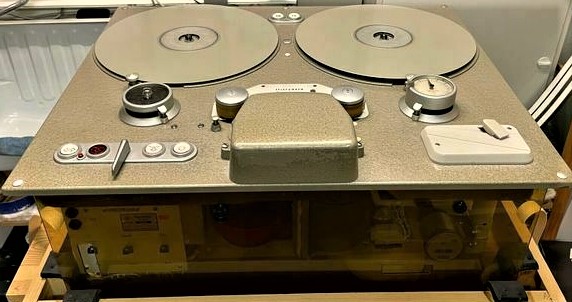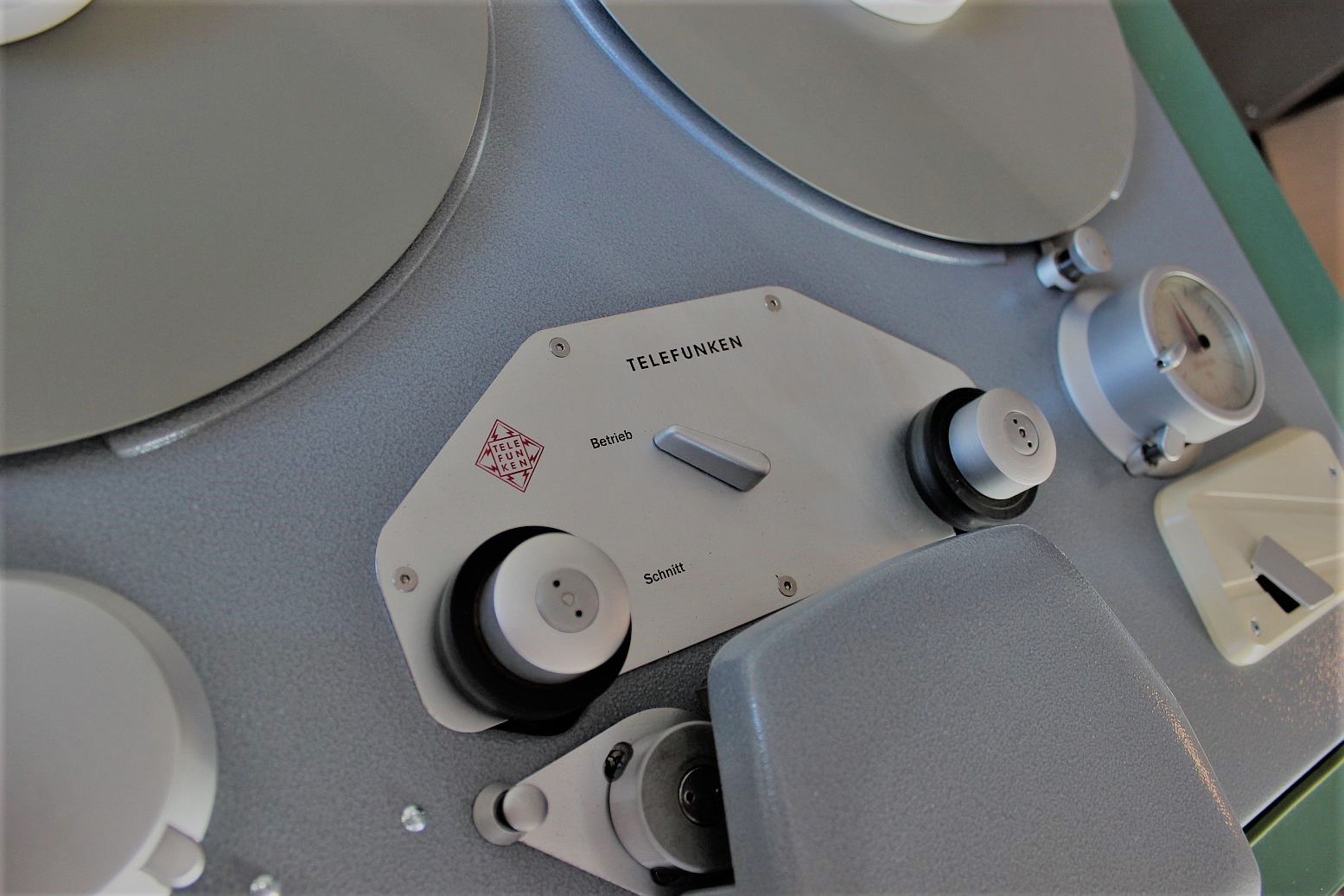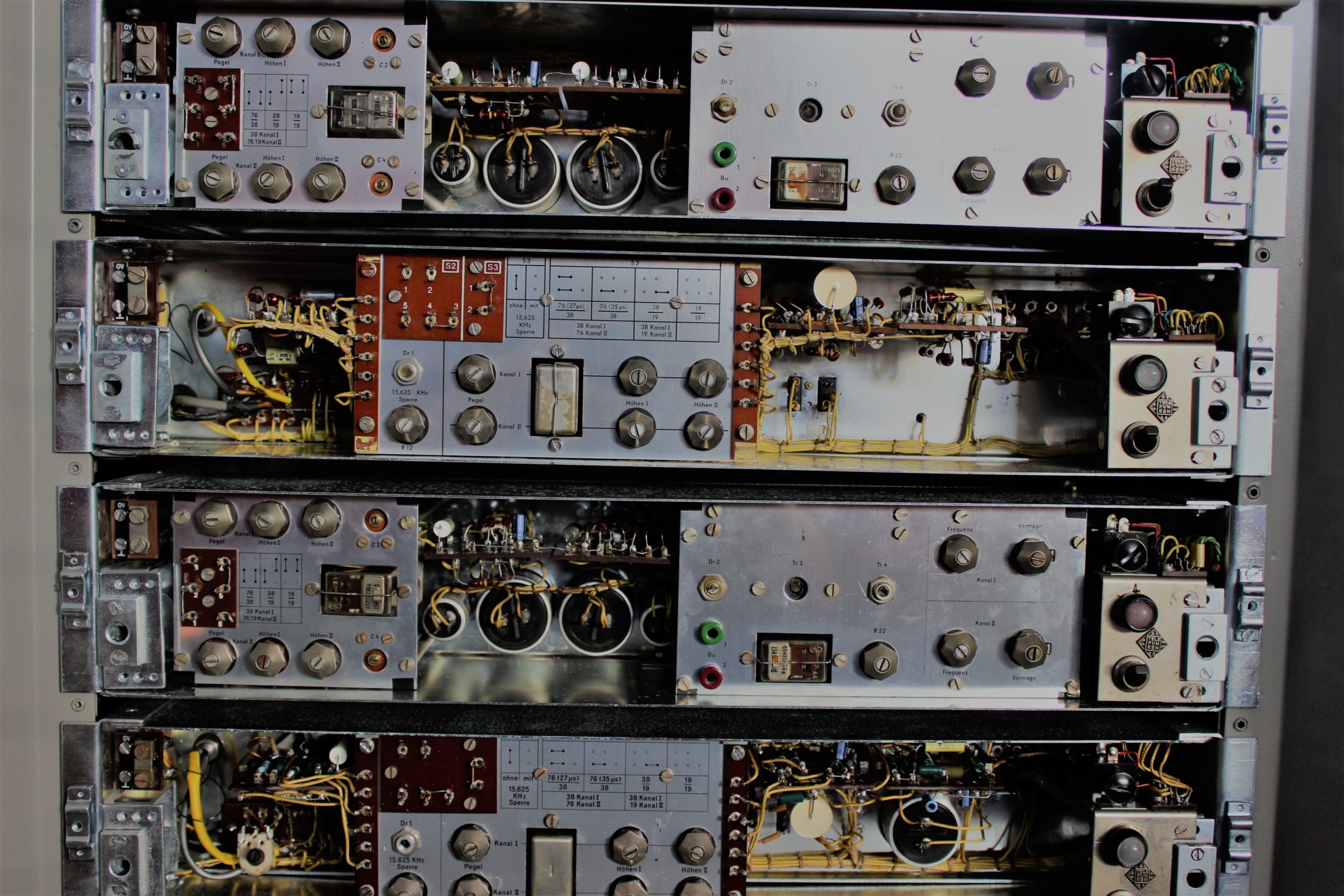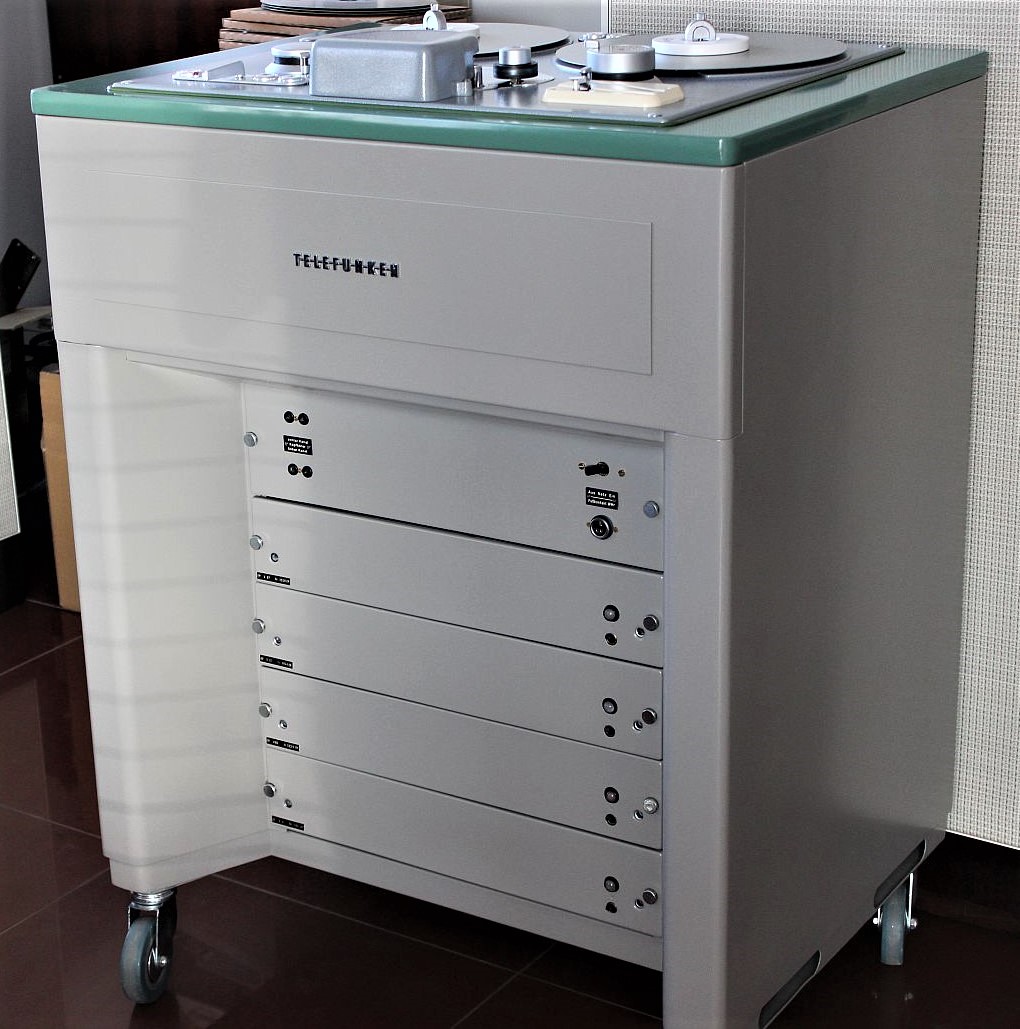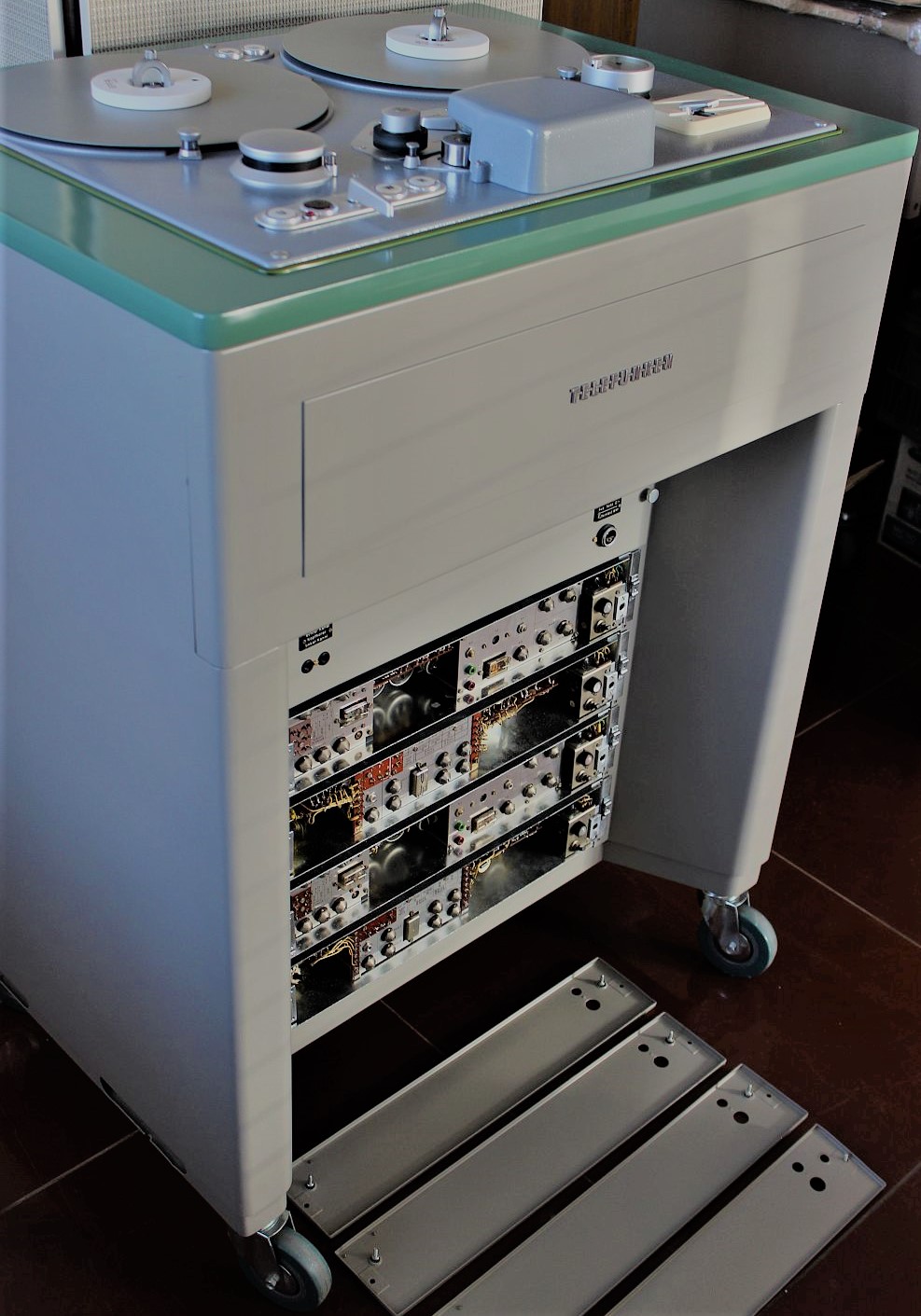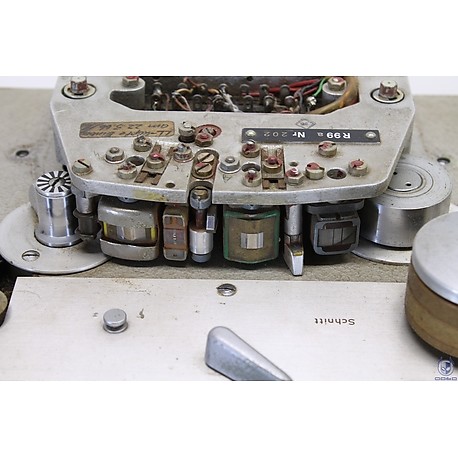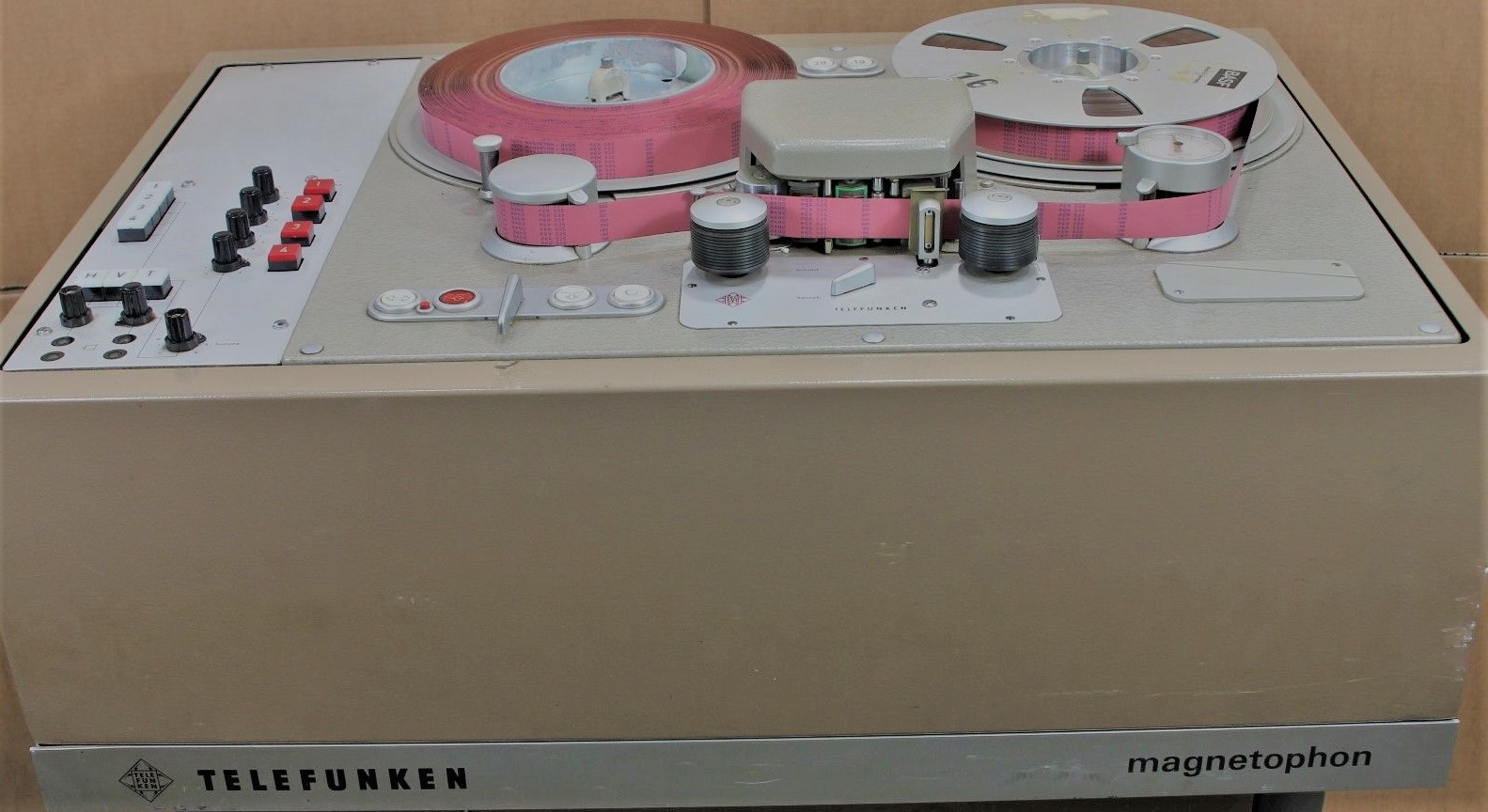Technical Details
Brand: Telefunken
Model:M 10
Category:Super High Fidelity
Application:Studio
Electronics:Solid State
Equalization:IEC
Country of Manufacture:Germany
Release dates:1957 - 1973
Tracks:1/2 Rec/PB
Speeds: 7 1/2, 15, 30
Max Reel Size("): 10.5"
Number of heads: 3
Dimension: 645 x 525 x 308 mm / 25.4 x 20.7 x 12.1 inch
Head Composition: Other
Head Configuration: Stereo - Stacked
# Motors: 3
Voltage(s): 220-240v
Outputs: XLR Balanced, DIN
Signal-to-Noise Ratio:58 dB (15ips) 54 dB (7.5ips)
Sound quality rating:9 / 10
Long-term reliability rating: 8/ 10
Weight: 63 kg / 138.7 Lbs
Additional Details
Description
The first M10 machines produced in 1957, were running quarter-inch tape and used tube/valve electronics, which relative to the American tube designs, was a bit overcomplicated and doesn’t sound as good. Later production switched over to solid-state.
Many consider the transports on the M 10 to be as good as it gets.
These were used extensively in radio stations in Germany and of course, recording studios.
The main competition for this tape recorder in Europe was the Studer C37 but some who have used both, prefer this one.
Excerpts from an Angus McKenzie review in Studio Sound September 1970
Two head blocks were provided with the machine, the first mono full track and the second stereo with full track erase head. The electronics for the 2 head blocks are completely different, permitting separate tape amplifier and oscillator setting up for each block.
Mono amplifiers are mounted immediately below the deck with the stereo amplifiers below them and below this again are the Canon XLR sockets to both the stereo and mono inputs and outputs..
All the amplifiers are on quickly replaceable printed circuit boards. The presets can be reached easily while the machine is running with the exception of the 80 kHz bias traps on the oscillator board. Although found precisely set, the traps are difficult to get at. Once set however, they should not need adjustment. The recording amplifier includes level controls for each speed and independent equalizers for adjusting the mid HF lift and extreme top peaking.
A wave analyser was connected across the recording amplifier output transformer secondary and I was most impressed by the exceptionally low distortion at recording levels far above any that would ever be used in reality. The distortion of the recording amplifier under these conditions was never more than .2% total. Distortion of 5 kHz at an exceptionally high recording level was also measured for both second and third harmonics and was again very low.
The record replay frequency response at 38 cm/s measured on the indicate equipment was within .5 DB from 31.5 Hz to 18 kHz. This is in itself is astonishing and by far the finest response I’ve ever measured at this speed. Strangely the 19 cm/s response was even better never varying by more than one quarter DB after carefully setting all the playback amplifiers.
Possibly no greater compliment could be paid to a machine and the recommendations that it can be used for making accurate test tapes and a number of experiments were carried out to determine this.
A complete change of direction from fast-forward to fester verse can be obtained in about six seconds without any tape stretch, the tape halting and reversing after approximately two seconds.
Two tape tension positions are available for both small and large spools. The switch for this, however, together with the deck on/off switch, is located underneath the deck and is accessible only by lifting the entire surround of the deck.
Before the tape enters the head path assembly it passes around a stroboscope, through a capstan assembly, over that block then over the main capstan from which it runs around the tape position indicator and onto the right-hand school, tension levers being present just before the tape goes on to either spool. The tape reaches nominal speed into 200mS and specified wow and flutter, within one second.
Some users may well find it inconvenient to have all the input and output sockets on the front but I understand that they can be placed at the rear to special order.
The heads are Alfenol, not ferrite and are guaranteed for 10,000 hours.
Additional Info
Variations on the M 10
M10 R89 38/19 cm/s, 1/4″ (1957)
M10 R89a 76/38 cm/s, 1/4″ (1958)
M10 R89g 38/19 cm/s, 1″ (1960)
M10 R99 mono, full track, 1/4 “tape
R99a pilot tone head
R99b half-track
R99c half-track
R99d stereo
R99g four track 1 “tape


